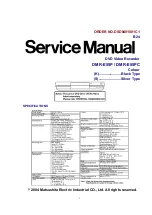
2-13
MN716
Torque Control Mode
When Jumper J7 is set to TRQ position, the BC200/BC201 will control motor torque. Two types of
torque characteristics are selectable with jumper J8, Speed Linear Torque (S/L) and Non Linear Torque
(NLT).
In the S/L position (factory setting), both output torque and motor speed vary linearly as a function of
the analog input signal. The S/L type of torque is most suitable for take up and payout winders where
the speed and torque requirements vary as the winder roll diameter changes.
The S/L torque characteristics are shown in Figure 2-13.
Figure 2-13 Linear Torque Curve
LOWER TORQUE SETTING
0 10 20 30 40 50 60 70 80 90 100
100
90
80
70
60
50
40
30
20
10
0
HIGHER TORQUE SETTING
M
O
TO
R
S
PE
ED
(%
)
TORQUE (%)
In the NL position, only torque (not speed) is varied by the input signal. The motor output torque
remains constant over the motor’s full speed range unless the load is less than the set torque. If the
load torque decreases below the set torque, the motor will rapidly increase to full speed. This type of
torque control is applicable to processes where the torque must remain constant over a wide motor
speed range. The NL torque characteristics are shown in Figure 2-14.
Figure 2-14 Non-Linear Torque Curve
LOWER
TORQUE
SETTING
HIGHER
TORQUE
SETTING
0 10 20 30 40 50 60 70 80 90 100
100
80
60
40
20
0
SP
EE
D
TORQUE (%)
Because the BC200/BC201TM are regenerative controls, torque will be applied in both forward and
reverse directions. The maximum torque can be set with the FWD CL and REV CL trimpots, and by
using the FWD ACC and REV ACC trimpots, the rate of change of torque can be made more or less
gradual. The maximum speed trimpot can be used to set the maximum motor speed under a no load
condition.
StockCheck.com
Downloaded from StockCheck.com






































